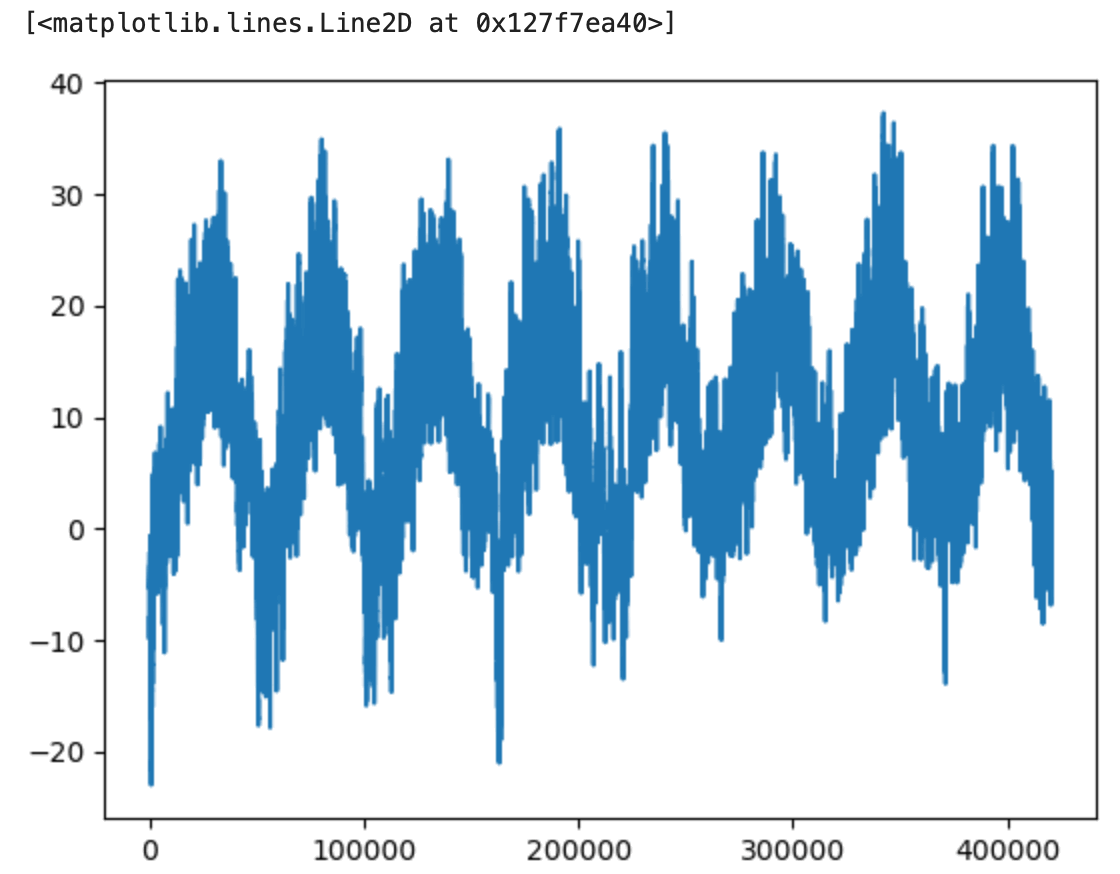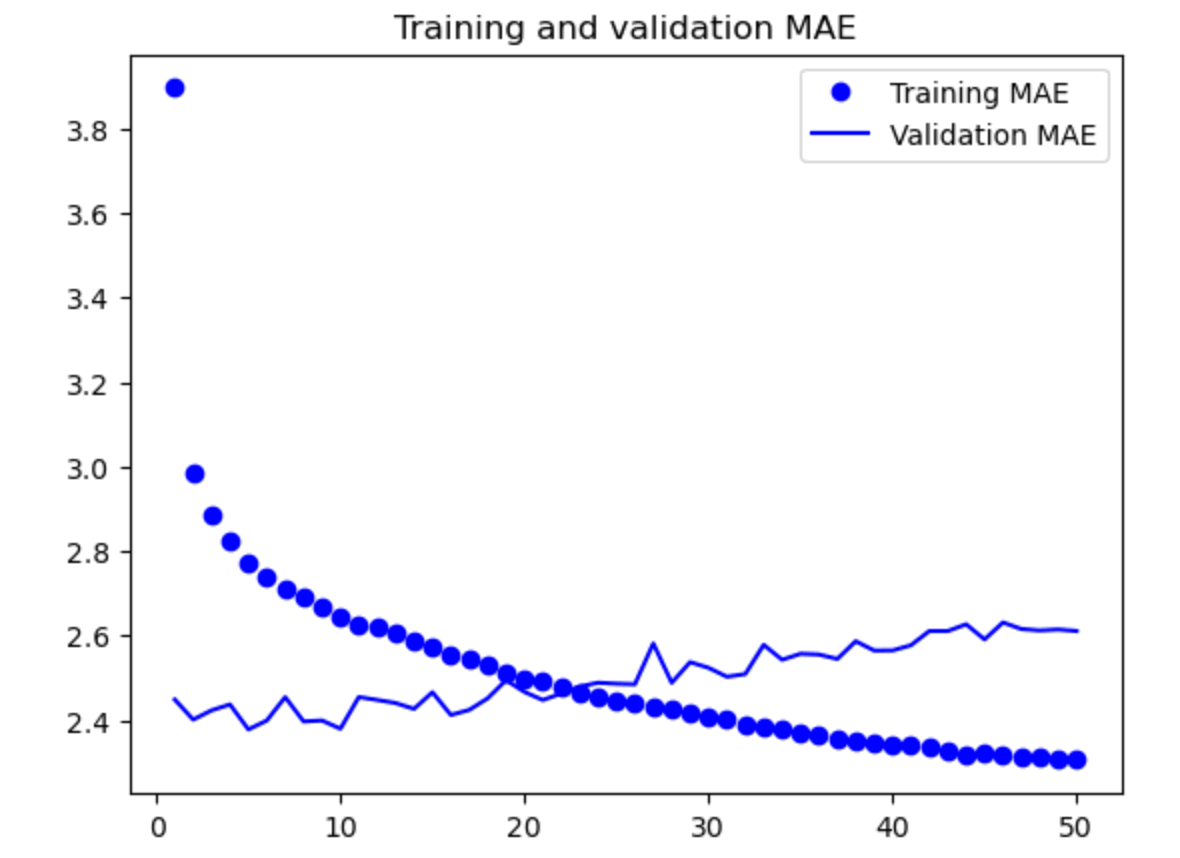Implementing LSTM RNN using Keras and TensorFlow
 Nitin Sharma
Nitin Sharma
In this Article we will implement LTSM RNN model using Keras and TensorFlow. LSTM model was discussed in my previous article , but we will make this implementation easier by using Keras framework.
We will be using Jena Climate dataset recorded by the Max Planck Institute for Biogeochemistry. The dataset consists of 14 features such as temperature, pressure, humidity etc, recorded once per 10 minutes.
Lets Load the libraries
from urllib.request import urlretrieve
import numpy as np
import os
from tensorflow import keras
Load the Data
url=("https://s3.amazonaws.com/keras-datasets/jena_climate_2009_2016.csv.zip")
filename = "jena_climate_2009_2016.csv.zip"
path, headers = urlretrieve(url, filename)
Lets inspect the data
fname = os.path.join("jena_climate_2009_2016.csv")
with open(fname) as f:
data = f.read()
lines = data.split("\n")
header = lines[0].split(",")
lines = lines[1:]
print(header)
print(len(lines))
['"Date Time"', '"p (mbar)"', '"T (degC)"', '"Tpot (K)"', '"Tdew (degC)"', '"rh (%)"', '"VPmax (mbar)"', '"VPact (mbar)"', '"VPdef (mbar)"', '"sh (g/kg)"', '"H2OC (mmol/mol)"', '"rho (g/m**3)"', '"wv (m/s)"', '"max. wv (m/s)"', '"wd (deg)"']
420451
We will Split the data into two numpy arrays as temperature and raw_data
temperature = np.zeros((len(lines),))
raw_data = np.zeros((len(lines), len(header) - 1))
for i, line in enumerate(lines):
values = [float(x) for x in line.split(",")[1:]]
temperature[i] = values[1]
raw_data[i, :] = values[:]
Shape of the raw_data is
raw_data.shape
(420451, 14)
So we have 420451 samples containing 14 features of data
Plotting the temperature timeseries
from matplotlib import pyplot as plt
plt.plot(range(len(temperature)), temperature)

Computing the number of samples we'll use for each data split
We will split data into 50 % for training data, 25 % validation and test data each.
num_train_samples = int(0.5 * len(raw_data))
num_val_samples = int(0.25 * len(raw_data))
num_test_samples = len(raw_data) - num_train_samples - num_val_samples
print("num_train_samples:", num_train_samples)
print("num_val_samples:", num_val_samples)
print("num_test_samples:", num_test_samples)
print("raw_data Shape:", raw_data.shape)
num_train_samples: 210225
num_val_samples: 105112
num_test_samples: 105114
raw_data Shape: (420451, 14)
Normalizing the data
We will normalize the data using mean and standard deviation
mean = raw_data[:num_train_samples].mean(axis=0)
raw_data -= mean
std = raw_data[:num_train_samples].std(axis=0)
raw_data /= std
We will create Timeseries dataser by using keras API keras.utils.timeseries_dataset_from_array
We will keep the sequence length of 120 hr and use batch size of 256 form the samples. We will forecast temperature for the next 24 hr.
Instantiating datasets for training, validation, and testing
sampling_rate = 6
sequence_length = 120
delay = sampling_rate * (sequence_length + 24 - 1)
batch_size = 256
train_dataset = keras.utils.timeseries_dataset_from_array(
raw_data[:-delay],
targets=temperature[delay:],
sampling_rate=sampling_rate,
sequence_length=sequence_length,
shuffle=True,
batch_size=batch_size,
start_index=0,
end_index=num_train_samples)
val_dataset = keras.utils.timeseries_dataset_from_array(
raw_data[:-delay],
targets=temperature[delay:],
sampling_rate=sampling_rate,
sequence_length=sequence_length,
shuffle=True,
batch_size=batch_size,
start_index=num_train_samples,
end_index=num_train_samples + num_val_samples)
test_dataset = keras.utils.timeseries_dataset_from_array(
raw_data[:-delay],
targets=temperature[delay:],
sampling_rate=sampling_rate,
sequence_length=sequence_length,
shuffle=True,
batch_size=batch_size,
start_index=num_train_samples + num_val_samples)
Inspecting the output of one of our datasets
for samples, targets in train_dataset:
print("samples shape:", samples.shape)
print("targets shape:", targets.shape)
break
samples shape: (256, 120, 14)
targets shape: (256,)
Lets create A recurrent layer in Keras
Training and evaluating a dropout-regularized LSTM
inputs = keras.Input(shape=(sequence_length, raw_data.shape[-1]))
x = layers.LSTM(32, recurrent_dropout=0.25)(inputs)
x = layers.Dropout(0.5)(x)
outputs = layers.Dense(1)(x)
model = keras.Model(inputs, outputs)
callbacks = [
keras.callbacks.ModelCheckpoint("jena_lstm_dropout.sample",
save_best_only=True)
]
model.compile(optimizer="rmsprop", loss="mse", metrics=["mae"])
history = model.fit(train_dataset,
epochs=50,
validation_data=val_dataset,
callbacks=callbacks)
Epoch 48/50
819/819 [==============================] - 66s 80ms/step - loss: 8.9161 - mae: 2.3114 - val_loss: 11.4386 - val_mae: 2.6123
Epoch 49/50
819/819 [==============================] - 68s 83ms/step - loss: 8.8472 - mae: 2.3058 - val_loss: 11.4213 - val_mae: 2.6145
Epoch 50/50
819/819 [==============================] - 65s 79ms/step - loss: 8.8340 - mae: 2.3063 - val_loss: 11.3844 - val_mae: 2.6109
Load the the best saved model
model = keras.models.load_model("jena_lstm_dropout.sample")
print(f"Test MAE: {model.evaluate(test_dataset)[1]:.2f}")
405/405 [==============================] - 6s 14ms/step - loss: 10.3629 - mae: 2.5492
Test MAE: 2.55
Lets plot
import matplotlib.pyplot as plt
loss = history.history["mae"]
val_loss = history.history["val_mae"]
epochs = range(1, len(loss) + 1)
plt.figure()
plt.plot(epochs, loss, "bo", label="Training MAE")
plt.plot(epochs, val_loss, "b", label="Validation MAE")
plt.title("Training and validation MAE")
plt.legend()
plt.show()

Subscribe to my newsletter
Read articles from Nitin Sharma directly inside your inbox. Subscribe to the newsletter, and don't miss out.
Written by
